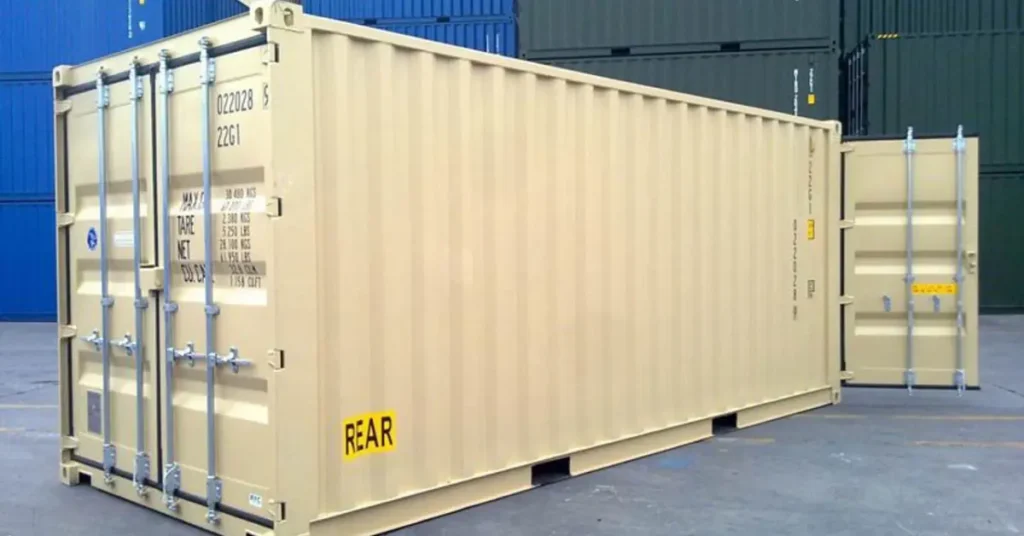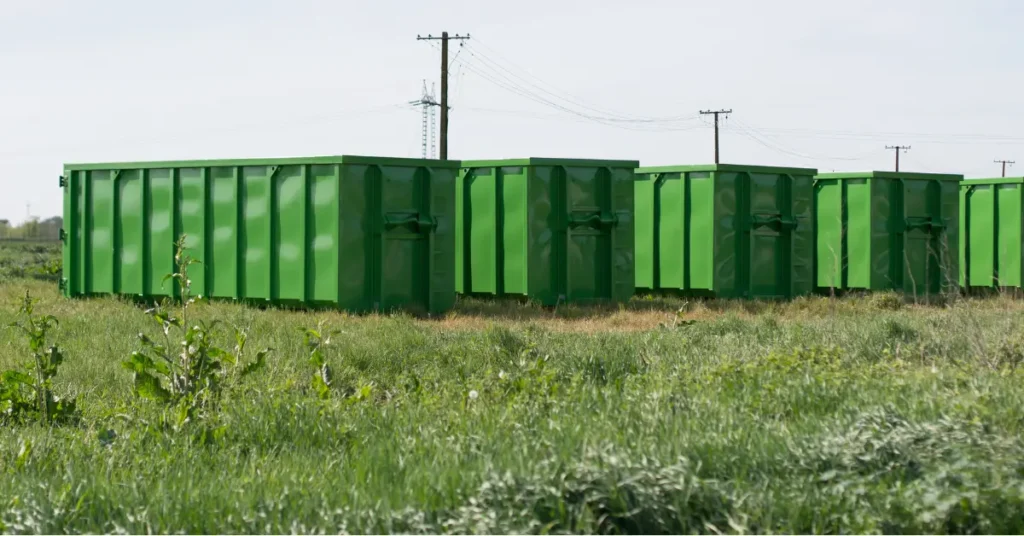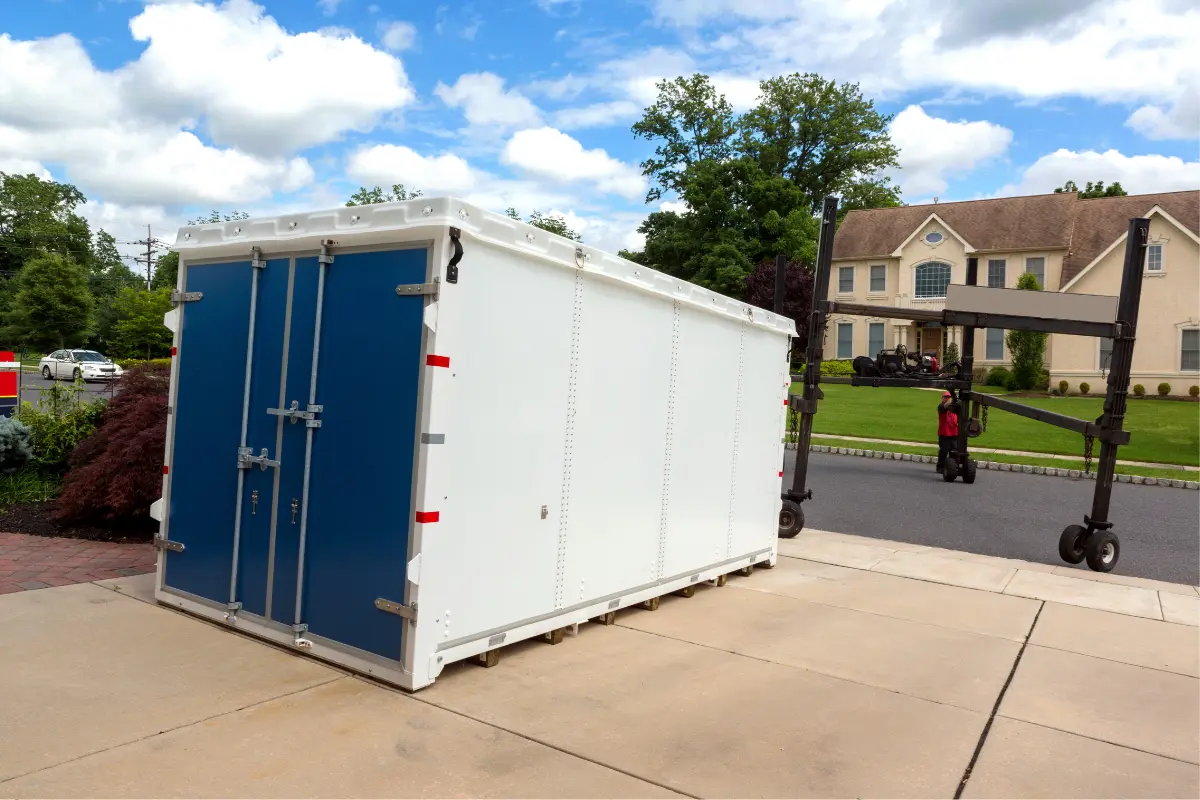Ground-level portable storage units have revolutionized how businesses and construction sites manage storage needs. Unlike traditional storage solutions that may require complex installation, these units offer immediate, on-site access to essential tools and materials. Their accessibility—requiring no steps or ramps—makes them incredibly efficient, especially in fast-paced environments. Whether it’s for storing construction tools or securing valuable inventory, the practical benefits of these units are undeniable, providing a straightforward solution to many businesses’ storage challenges.
Key Benefits of Ground-Level Portable Storage Units
Improved Safety for Loading and Unloading
The safety benefits of ground-level storage units cannot be overstated. These units significantly decrease the likelihood of accidents during loading and unloading by eliminating the need for steps or ramps. Workers can move heavy tools and materials in and out with less effort and a lower risk of slips, trips, or falls—a common concern in work environments. This aspect is particularly crucial in fast-paced settings like construction sites, where safety is paramount. Additionally, the design of these units often includes features that further enhance safety, such as non-slip floors and wide doors.
Enhanced Organization for Tools and Materials
They provide ample space to store and organize tools and materials, which can be easily accessed without climbing or reaching. This setup saves time and prevents misplacement and potential damage to tools that often occurs in less organized environments. For sectors like construction or retail, where quick access to equipment is essential, the benefits of having a well-organized storage solution directly on the job site can directly influence productivity and operational success.
Versatility for Construction, Business, and Temporary Needs
These units can also be used in a variety of settings, from construction projects to retail spaces, and for both short-term and long-term needs. Whether you need a temporary solution during peak business periods or a durable setup for ongoing construction work, these containers are designed to meet diverse storage demands. Their robust construction and ability to withstand various environmental conditions make them suitable for nearly any site and any situation, reinforcing their role as a flexible and practical storage solution.

Features of Durable Ground-Level Storage Units
Steel Construction for Maximum Durability
Steel storage units are celebrated for their robustness and longevity, which make them an optimal choice for demanding environments like job sites and industrial areas. The material’s inherent strength offers superior resistance to wear and tear compared to other materials, ensuring that the storage unit can withstand heavy use without compromising security or integrity. Such durability is crucial for businesses that require dependable storage solutions that can withstand tough conditions, including extreme weather and heavy, continuous loading and unloading of goods.
Weatherproof Design
Weather resistance is critical for any storage unit, and weatherproof storage containers excel in this area. Engineered to provide reliable protection against rain, wind, and even extreme temperatures, it ensures the contents remain dry and undamaged regardless of the outside conditions. This capability is especially beneficial for storing sensitive materials like electronics or important documents for businesses or shielding construction materials from potential weather-related degradation on job sites.
Advanced Locking Systems for Theft Prevention
The importance of security cannot be overstated when it comes to choosing the right storage solution, especially in areas susceptible to theft or vandalism. Here’s a detailed look at how these locking systems can safeguard your assets:
- Traditional Padlocks: While they offer a basic level of security, their simplicity and ease of use make them a practical choice for many applications. Padlocks come in a variety of grades, with some featuring hardened steel bodies and anti-pick mechanisms for enhanced durability. These locks are cost-effective and easily replaceable, making them a popular choice for temporary or less sensitive storage needs. While not the most secure option, they are a dependable starting point for many users.
- Crossbar Locks: Crossbar locks are a step up in security and are designed to extend across the width of the storage container door. This design distributes force more evenly, making it significantly harder for potential intruders to pry the doors open. Constructed from heavy-duty steel, crossbar locks are ideal for areas where added security is a priority. Their robust design deters theft and resists tampering, providing a higher level of protection for valuable assets. Installation is straightforward, and their visibility is an additional deterrent, discouraging unauthorized access attempts.
- Electronic Locks: For those seeking maximum security, electronic locks offer advanced features that traditional systems cannot match. These locks often include keypad entry, biometric access, alarm integration, and remote monitoring capabilities. Such features are particularly useful for high-value storage, as they provide customizable access control and real-time alerts. Electronic locks are also compatible with broader security systems, enabling seamless integration into a larger network of surveillance and alarms.
- Hidden Shackle Padlocks: Hidden shackle padlocks are an innovative solution designed to resist bolt cutters and other common theft tools. By concealing the shackle within the lock’s body, these locks eliminate a primary point of vulnerability. This makes them highly effective in deterring theft, especially in high-risk locations. Hidden shackle padlocks are typically made from hardened steel, providing excellent durability and resistance to tampering. Their compact design also makes them less conspicuous, reducing the likelihood of attracting attention from potential thieves.
- Cylinder Locks: Cylinder locks are built directly into the storage container door, offering a seamless and highly secure locking mechanism. Unlike traditional padlocks, these are designed to be tamper-resistant, making them much harder to pick or force open. These locks often include anti-drill and anti-bump features for added protection. Their integration into the container door enhances both security and aesthetics, providing a clean and professional look.
Choosing the right locking system for your storage container depends on the specific needs of your site and the value of the assets being stored. Each type of lock offers unique advantages, from basic security with padlocks to advanced protection with electronic or hidden shackle locks.
Customizable Interiors
Whether you need shelving units to organize small parts, hanging racks for clothing or uniforms, or segmented spaces for different types of merchandise, these temporary storage units can be fitted with various installations to optimize space and functionality. Customization allows for greater efficiency and organization, enabling businesses to streamline operations and maintain better control over their inventory.
Comparing Portable Cargo Containers and Shipping Containers
Key Differences in Size, Design, and Functionality
While both are used for storage and transport, they have distinct characteristics tailored to different needs. Durable storage containers are generally smaller and more flexible, designed for easy relocation and fitting into tighter spaces. This makes them ideal for urban construction sites or businesses with limited space. In contrast, shipping containers are larger and built for long-haul shipping across oceans and continents, making them suitable for high-volume storage and international transport.
Matching Container Types to Project-Specific Needs
Storage container options should be based on the specific requirements of the project or business. If the primary need is for secure storage for job sites that can be accessed multiple times a day, then a ground-level portable unit is ideal. However, a larger shipping container might be more cost-effective for storing large quantities of goods or materials that do not require frequent access. Understanding these nuances will guide businesses and project managers in choosing the right type of container to maximize efficiency and effectiveness on-site.
Renting Portable Storage Units: A Cost-Effective Solution
Benefits of Renting vs. Buying Storage Units
By renting, companies avoid the upfront costs of buying, which can be substantial, and instead enjoy lower, predictable monthly expenses. Also, renting allows for flexibility in project scope and duration; units can be added or removed as project needs change without the commitment of a permanent purchase. This flexibility helps manage costs more effectively and aligns storage solutions with project budgets and timelines.

Coordinating Delivery and Pickup
Effective coordination of delivery and pickup of mobile storage units is critical to maximizing their benefits. Proper planning ensures that units arrive and are removed as needed, minimizing disruption to business operations and project schedules. Here’s an in-depth look at managing these logistics effectively:
- Determine Requirements: Start by evaluating the specific needs of your project to determine the number and type of mobile storage units required. Consider factors such as the volume of items to be stored, the available space at the site, and the accessibility of delivery routes. For example, narrow access roads or steep inclines may necessitate smaller units or specialized delivery equipment. Proper assessment at this stage ensures that the selected units align with the project’s demands, preventing underutilization or overcrowding.
- Schedule Delivery: Coordinate with the rental company to schedule delivery at a time that minimizes interference with ongoing operations. Early morning or late afternoon deliveries are often ideal for reducing disruptions, especially in busy workplaces or construction sites. Communicate any site-specific details, such as restricted access times or preferred entry points, to the rental company in advance. Clear scheduling reduces the risk of delays and ensures the units are delivered efficiently and on time.
- Site Preparation: Before the storage units arrive, ensure the site is properly prepared to accommodate them. This includes clearing debris, leveling the ground, and verifying that the surface is stable enough to support the weight of the containers. In areas prone to flooding or uneven terrain, consider laying gravel or using concrete pads to provide a sturdy base. Adequate preparation not only facilitates smooth delivery but also enhances the safety and longevity of the storage units.
- Regular Communication: Maintain consistent communication with the rental company throughout the rental period. This ensures that any schedule changes, additional requirements, or issues are addressed promptly. For instance, if project timelines shift or additional units are needed, early communication allows for quick adjustments. Establishing a reliable point of contact ensures seamless coordination and minimizes the risk of misunderstandings or logistical errors.
- Plan for Pickup: As the rental period approaches its end, plan the removal of the storage units to ensure a smooth transition. Organize and account for all items stored within the units, clearing them out completely before pickup. Confirm with the rental company the exact time and date for removal, and ensure the site is accessible and free of obstacles. This preparation not only expedites the process but also reduces the likelihood of incurring additional fees for delays or damage to the units.
It takes careful planning, open communication, and proactive site preparation to coordinate delivery and pickup for mobile storage of construction gear. Proper management of these logistics is a vital step in maximizing the efficiency and value of mobile storage solutions.
Maximizing Efficiency with Ground-Level Portable Storage
Maintaining and Inspecting for Longevity
It is important to check for signs of wear and tear, such as rust, dents, or compromised locks, which could affect the security or usability of the unit. Scheduled cleanings and checks for weatherproofing integrity also prevent issues like leaks or mold, which could damage stored items. Keeping these units in good condition extends their lifespan and protects the materials and equipment stored inside.
Ensuring Compliance with Local Storage Regulations
Non-compliance can lead to fines, legal complications, and delays in operations. Proper adherence not only protects your project but also fosters good relationships with local authorities and neighbors. Below is a detailed exploration of key steps to ensure compliance
- Research Local Laws: Zoning regulations often dictate where storage for businesses can be placed, whether in residential, commercial, or industrial zones. Specific regulations might apply based on the intended use, such as temporary construction storage or long-term business operations. Many municipalities provide zoning maps and guidelines online, making it easier to navigate the requirements. For complex cases, consulting with local planning boards or legal experts ensures you are fully informed and avoid unintentional violations.
- Obtain Necessary Permits: Permit types can vary widely depending on the location and purpose of the storage unit, including temporary use permits, conditional use permits, or building permits. The application process often involves submitting detailed documentation, such as site plans, dimensions, and intended usage. Some jurisdictions require inspections before approval to ensure safety and code compliance. Failure to obtain the proper permits can result in hefty fines, forced removal of the unit, or even legal disputes.
- Follow Usage Restrictions: Many jurisdictions have rules regarding what can and cannot be stored in portable units. Hazardous materials, including flammable substances, explosives, and toxic chemicals, are typically prohibited to reduce the risk of accidents or environmental harm. Some areas enforce time restrictions, such as limiting access to the unit during specific hours to minimize noise or disruption in residential zones.
- Maintain Safety Standards: Fire safety is a top priority, requiring adherence to fire codes and best practices, such as keeping the unit clear of flammable materials and ensuring proper ventilation. Accessibility regulations, such as those outlined in the Americans with Disabilities Act (ADA), may also apply, particularly for units intended for public or employee use. Implementing these safety measures minimizes risks and fosters a secure environment, ensuring the well-being of both personnel and stored materials.
You can ensure a smooth and legally compliant storage operation by researching local laws, obtaining necessary permits, following usage restrictions, and maintaining safety standards. Each step not only protects your investment but also promotes safe and efficient storage for construction projects, helping you avoid costly setbacks and fostering goodwill within the community.

When selecting a portable storage solution, it’s essential to consider factors such as the specific storage requirements of your project or business, the intended duration of use, and local compliance requirements. Assessing the quality and features of different units, such as their security features and weather resistance, can help ensure you choose the best value and protection for your needs. Ultimately, the right storage solution will balance functionality, cost-effectiveness, and flexibility, allowing your operations to run smoothly and without interruption.

 Receive a Quick Quote
Receive a Quick Quote


 ” -Zachary
” -Zachary